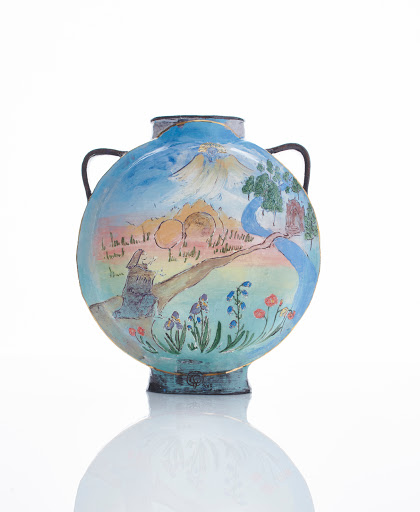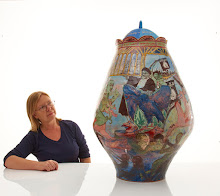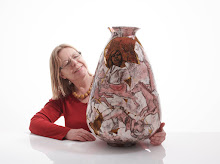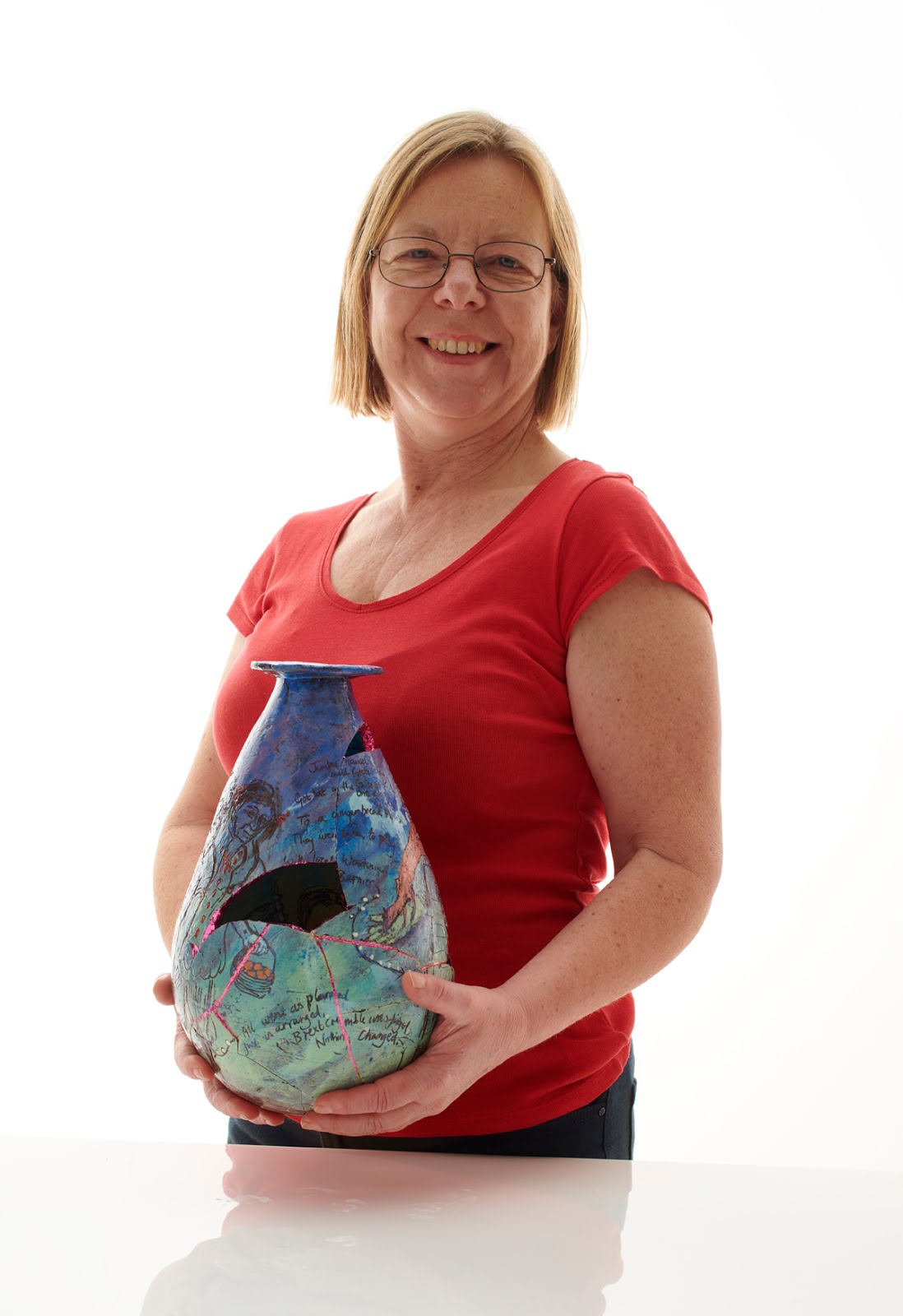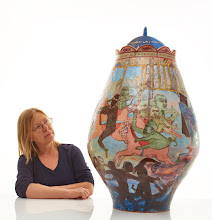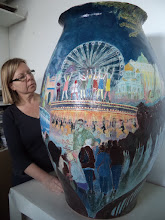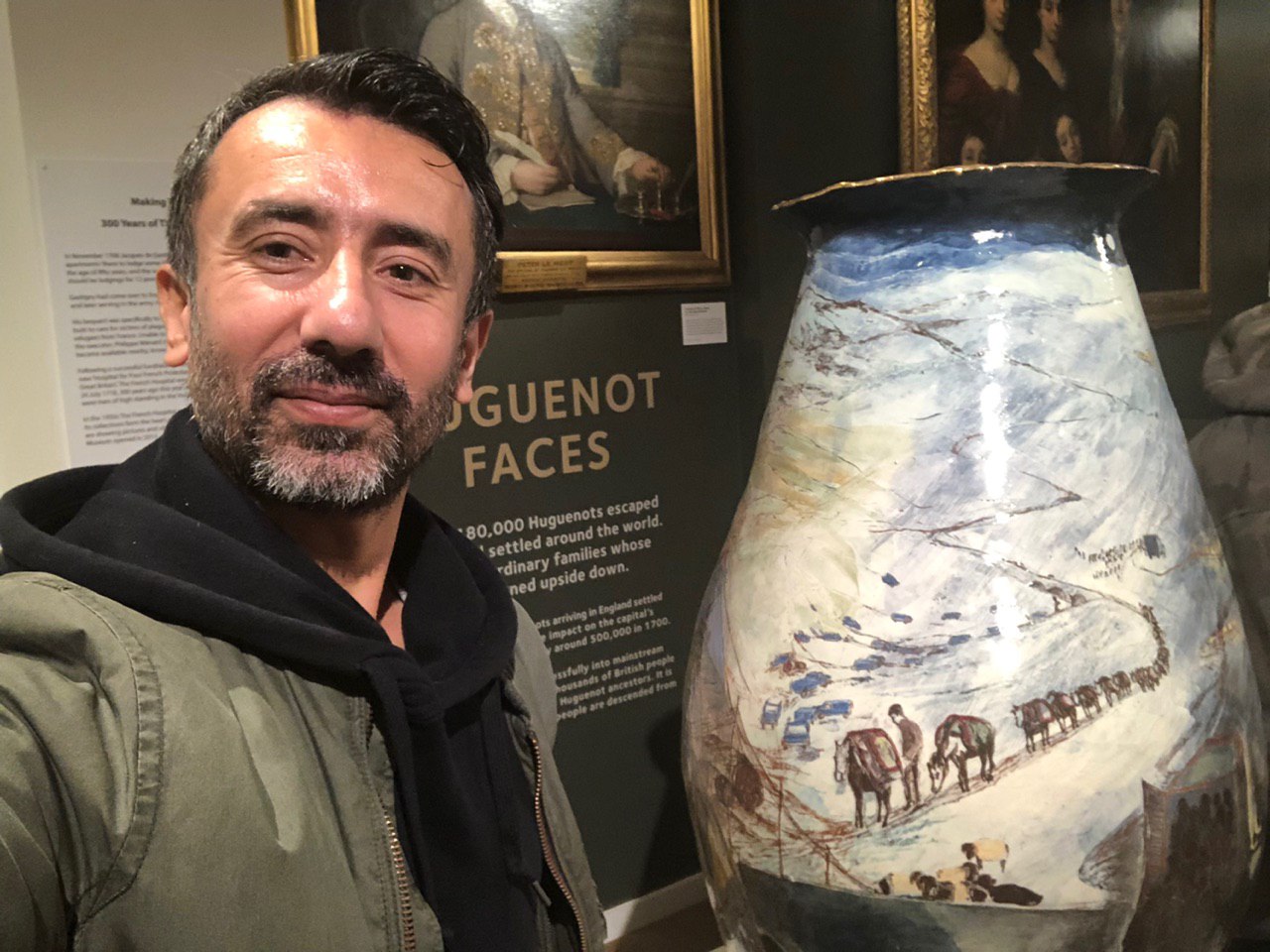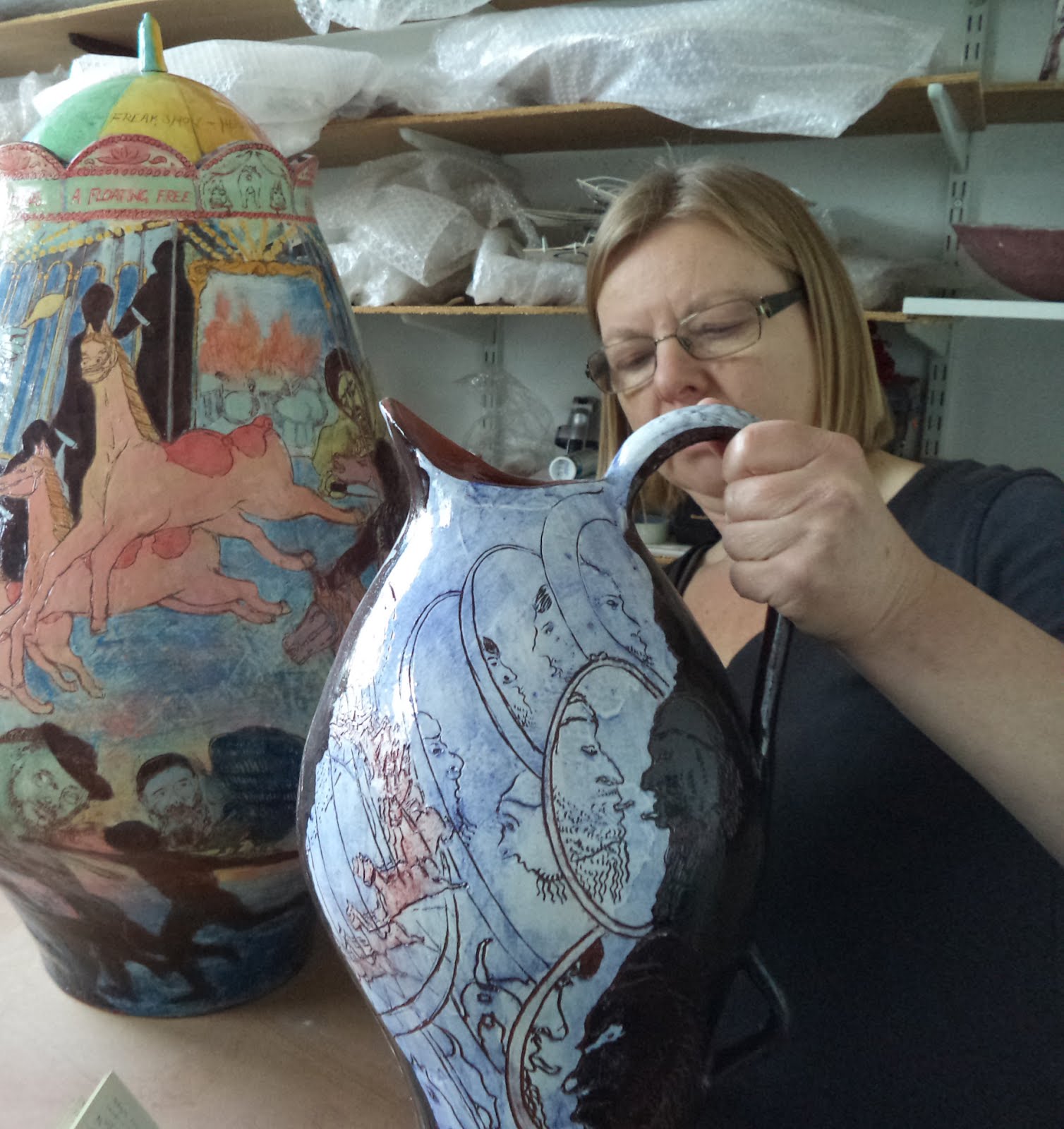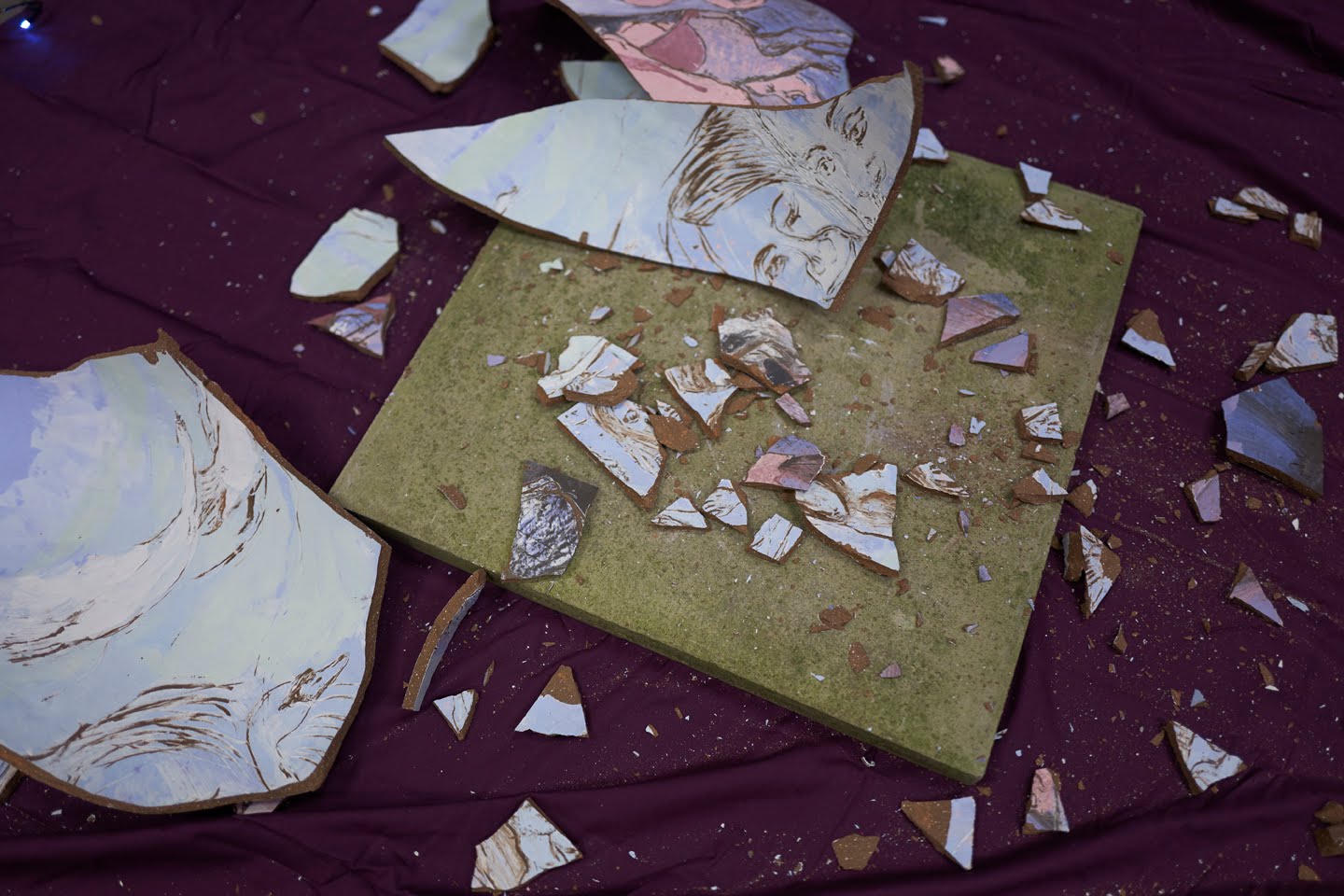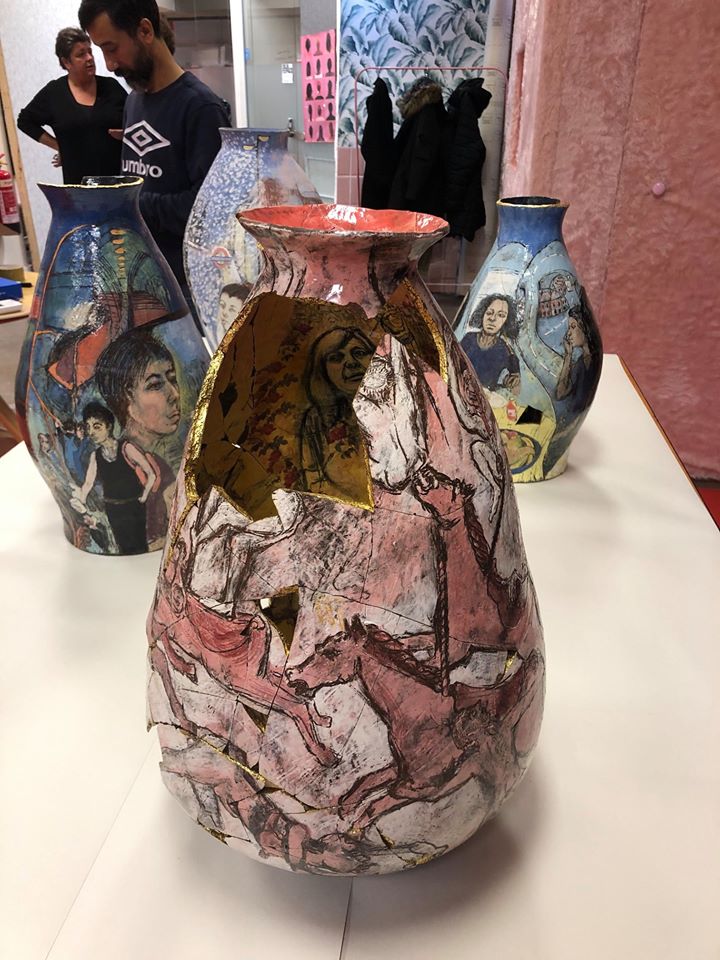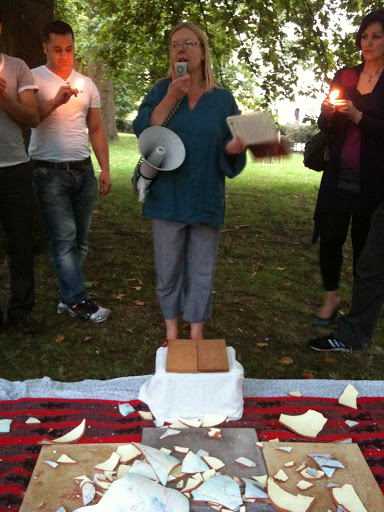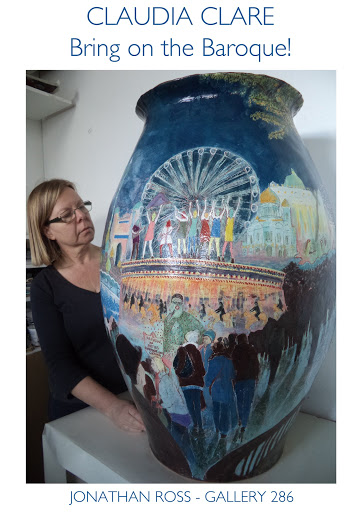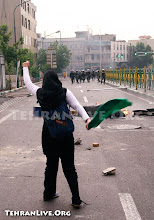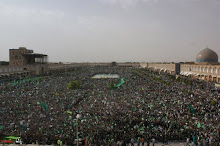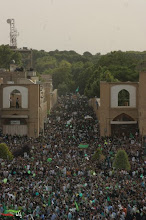Here is the 6th Ceramic Art London at the Royal College of Art. It looked tired. Only six years old and tired already. It’s not so much that the work itself looks tired, it’s the overall curation of the event that is the problem. I would suggest parking restrictions. I mean a simple rule – you can park your pots here for two consecutive years, but no more, and no return within two years. That would help to refresh the show a bit but it needs more than that. I don’t know who is on the selection panel or on what basis they select, but it is clear they are not keeping the look of the whole in mind. If they need a wider variety of makers to apply for selection then they need to say so. At the moment it looks like they’re short of applications. There are far too many people who have been showing year after year. There were very few new faces. The inclusion of two makers of table ware in bone china, (Lowri Davies and Maria Lintott) was very welcome indeed and another, slightly over complicated, but nonetheless appealing collection of work by Solomia Zoumaras, (there for her second year), was also a welcome change.
CAL is not a survey of contemporary ceramic practice, no single show or art fair could achieve that and certainly not in that format – it is the standard approach to art fairs with a single small, kiosk type space for each maker. Susan O’ Byrne took over two spaces to show her troupe of dancing vermin, (one muntjac, ( a small deer), a pack of galavanting foxes and a gathering of crows,) but apart from that, it was one space each and set out your pots as tastefully as you can. Apart from O’Byrne, and the three named above, there was really nothing fresh, experimental, progressive, or thought provoking, - not the right space for contemplative or thought-provoking work anyway – but only these four made me stop and look again and want to see and know more. For a show this size, and this established, it isn’t enough.
Looking over the CAL catalogues for the last six years, the buzz and excitement of the launch in 2005 is barely recognisable as being part of the same event. It is difficult to discern if this is a gradual fade or a sudden collapse. The 2005 catalogue includes a collection of commentary from Grayson Perry, contributions from Edmund de Waal, Louise Taylor, (then head of the Crafts Council), as well as something from a collector, Michael Evans and from Jack Doherty, chair of the CPA which, with Ceramic Review, hosts the event. Variety breathed life into the show. Perry is, of course, a bona fide celebrity and can’t fail or, at that time, couldn’t fail to bring a sprinkling of stardust to almost any occasion. Edmund de Waal is the kind of star whose writing means something. In this otherwise unassuming catalogue, he writes a response to Stephen Bayley’s article published a year earlier in The Independent on Sunday, (Feb.15th 2004). The title of the article was: Pottery: The Evil in Our Society. While, according to de Waal, Bayley berates potters who, ‘did not know their place any more,’ de Waal himself responds by making the simple observation that they never had: ‘As to making installations, they were the currency of European Modernism,’ he remarks, after a brief discourse on the less functional aspects of Bauhaus.
The point is that there was lively debate, a sense of boundaries being broken, a sense, in short of a kind of renaissance in craft and, in particular, in ceramics. If commentators like Bayley and also Germaine Greer could get sufficiently steamed up about it to write articles in broadsheet papers, then we were certainly doing something right.
Now we are in a different phase. Ceramic work in mainstream and blue chip art galleries is becoming commonplace. It maybe tokenistic or only a brief flirtation, a kind of cultural tourism – let’s give this a try while we’re in recession. It doesn’t much matter, the danger for ceramics now is complacency. Where are the new voices, the new stars? Well they certainly weren’t at CAL. I’m not talking only about the work in the show, I’m almost more concerned about the ‘Discovery’ section – these are lectures and demonstrations. Whereas in earlier years we have had Clare Twomey (2009) talking about installation and Jeremy Theophilus talking about the forthcoming Biennial, both with a strong sense of mission and future developments, it seems we have now returned to a round up of fairly standard makers doing picture shows and demonstrating making techniques - tried and trusted, or maybe just tired and musty. Closer examination of the six catalogues I now have reveals that the seed of this is there right at that start. De Waal is recycled three times, the makers who give their presentations and demonstrations are the ones we’ve seen a thousand times before. Where is ‘the Discovery’ exactly? Is it not usual for London shows to curate new work rather than established work? How on earth can a public develop any sense of discernment, any experience of looking and deciding, if they are never presented with new work to consider and respond to?
In his 2005 essay, de Waal issues the following warning concerning the ways we might respond to Bayley’s attack: ‘There are other options, of course: bunkering down is an option, preaching to the converted is an option, talking to ourself is an option.’ This year’s CAL is disappointing because it has not heeded that warning. In responding only to the desires of the known and established ‘collectors,’ bringing in only the ‘tried and tested,’ it is, above all, talking to itself and people who talk to themselves quickly become boring. CAL cannot afford to look this dull again. The visitors and buyers will depart and with them will go much of the good will and enthusiasm that has been built up over the past six years.
For a different angle, please take a good look at the coverage of this event at Sliponline. You will find vast numbers of excellent pictures and probably some lively commentary - it says 'from Tuesday,' I guess this means Tuesday, March 9th or 16th.
Tuesday 2 March 2010
Subscribe to:
Posts (Atom)
